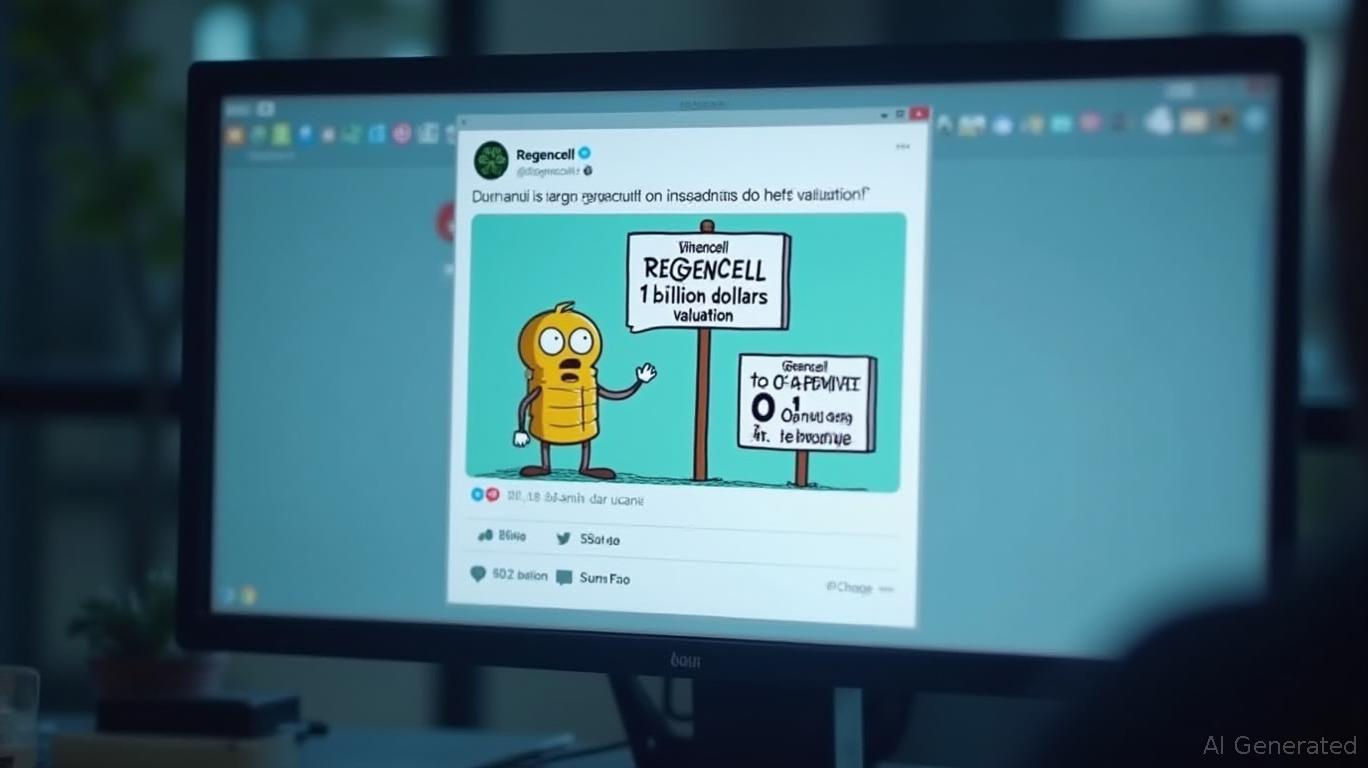Regencell's Stock Split: A Liquidity Gamble or a Meme-Driven Mirage?
The recent 38:1 stock split by Regencell Bioscience Holdings (NASDAQ: RGC) has propelled its shares into the spotlight, with the stock surging over 60,000% year-to-date (YTD) as of June 2025. While the split's stated aim was to enhance liquidity and accessibility for retail investors, the disconnect between its meteoric rise and the company's unproven therapies, lack of revenue, and mounting losses raises critical questions about its long-term viability. This analysis explores whether the split is a legitimate strategic move or a high-risk gamble masked by speculative hype.
The Strategic Rationale: Lowering the Barriers—or Fueling a Bubble?
Regencell's stock split, announced on June 2, 2025, reduced its share price from a pre-split peak of $950 to around $60–$70 post-split, making it accessible to retail investors. The move aimed to boost liquidity and attract broader participation, with trading commencing on a post-split basis on June 16.

However, the immediate post-split surge—shares quadrupled on the first trading day—suggests the split was less about liquidity and more about fueling speculative momentum. Retail traders, drawn to the “cheap” post-split price and the stock's meme-like status on platforms like Reddit and X, drove the frenzy. The company's tiny public float (30 million shares out of 500 million post-split) amplified volatility, with trading volumes spiking to 19.5 million shares on some days.
The Valuation Mirage: A 60,000% Rally Built on Sand
Regencell's stock has soared to a market cap of $29.67 billion by June 17, 2025—surpassing companies like Lululemon and Super Micro Computer—despite its lack of revenue and unproven treatments. The company reported net losses of $6.06 million in FY2023 and $4.36 million in FY2024, with no income from its Traditional Chinese Medicine (TCM) formulas for ADHD and autism spectrum disorder (ASD).
Clinical validation for its therapies remains scant. A 2023 trial for ADHD involved just 28 patients, while a 2021 trial for a modified formula targeting COVID-19 lacked rigorous scientific backing. The stock's rise appears detached from these fundamentals, fueled instead by social media buzz and the appointment of Robert F. Kennedy Jr. as U.S. Health Secretary, whose advocacy for alternative medicine has amplified interest in TCM.

Risks Lurking in the Shadows
Regulatory and Clinical Hurdles:
The FDA has yet to approve any of Regencell's therapies, and the company has no patents or distribution capabilities. Regulatory scrutiny is mounting, with the SEC investigating potential insider trading after an affiliate of CEO Yat-Gai Au acquired a 5% stake.Governance and Ownership Concentration:
Au's 86.24% ownership stake raises governance concerns. With 95% of shares held by insiders or institutional affiliates, the public float is too small to absorb shocks without dramatic price swings.Volatility and Liquidity Traps:
The stock's beta of -2.81 signals extreme volatility, and its low float makes it prone to “ramp-and-dump” schemes. A 48% surge on June 17 was followed by a 95% drop the next day, illustrating how quickly momentum can reverse.
The "Ramp-and-Dump" Debate: Legitimate Liquidity or a Pump-and-Dump?
The split's timing and outcome align with historical patterns of speculative “meme stocks.” Like AMTD Digital's 126% surge in 2022—followed by a crash—Regencell's rise appears driven by retail speculation rather than fundamentals. Key red flags include:
- No Revenue Stream: The company has yet to monetize its therapies.
- CEO's Controlling Stake: Au's ability to influence strategy and liquidity without dilution raises ethical questions.
- SEC Warnings: FINRA has flagged similar small-cap Chinese/Hong Kong firms as vehicles for fraud.
Investment Implications: Proceed With Extreme Caution
While the split lowered the entry barrier for retail investors, the risks far outweigh potential rewards. Key considerations:
- High-Risk, High-Reward Gamble: Treat Regencell as a speculative trade, not an investment. Set strict position limits (e.g., ≤1% of a portfolio).
- Monitor Regulatory Developments: SEC probes and FDA milestones will be critical catalysts.
- Avoid Long-Term Holds: Without clinical validation or revenue, the stock's valuation is unsustainable.
Conclusion: A Cautionary Tale for Retail Investors
Regencell's stock split and subsequent surge epitomize the dangers of speculative momentum in low-float, unproven companies. While accessibility and liquidity improvements are valid goals, the lack of revenue, weak clinical data, and governance risks paint a bleak outlook. Investors chasing the “next big thing” should heed this warning: without tangible progress, this rally is a mirage destined to fade—or burst—under the weight of its own hype.

Comments
No comments yet